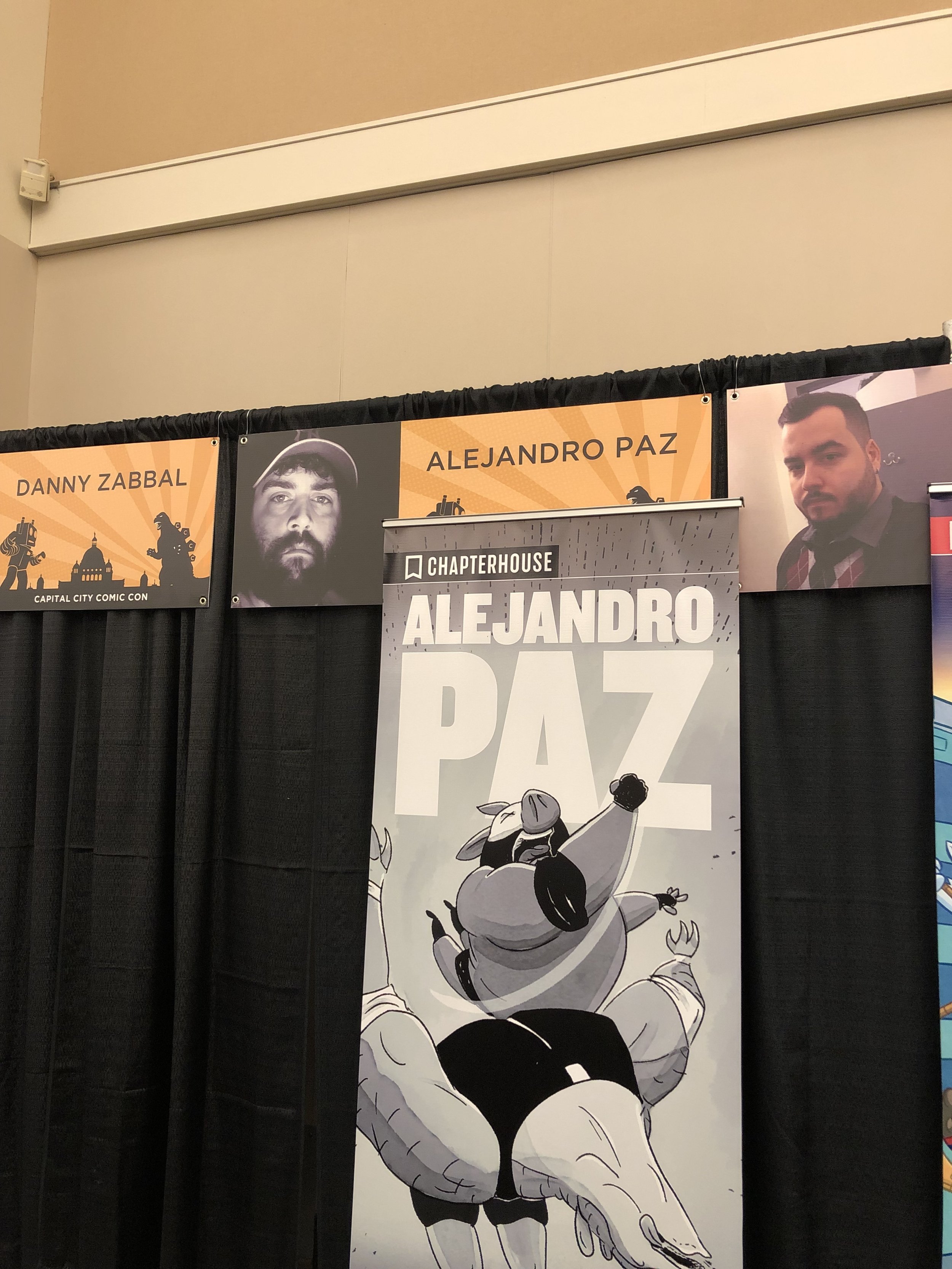Project Management for Making Comics: First Comic Convention
Could I have taken a scarier picture?
Most projects starts with a research phase. Being my first convention with Chorizo, and my second convention overall after years of taking a break, I used my most recent convention debut as a way to learn more about how to build to the best booth. I have an upcoming show in Brooklyn for Brooklyn Comic Con, and I hope to use some of the things I learned and make a stronger appearance.
In March, I went to my first comic book convention representing Chorizo. A huge thank you to Chapterhouse who printed Chorizo and brought me as part of the team to Capital City Comic Con in Victoria, BC.
Here are my main takeaways:
The booth should be easy to understand from 6 feet away - A lot of people walking by the booth couldn’t understand what my story was about at a glance. For my next convention, I will try to share more information on what the Chorizo universe is all about as people walk by the booth without forcing them to have to flip through the book. I think this means that the booth needs more signage or easy to understand prowrestling/fighting animals visible from across the way. Maybe even a map of Fight City.
Panels are fun and a good way to boost sales - Sketch contests, panels, and other things that people can learn more about you are a great way to get people to come to your booth later on. If you’re new to this, try to get into as many things like that as possible. I got lucky with Chapterhouse setting this up for me, but that’s not the case for everyone. If you can connect with the convention hosts, maybe you can get to talk about something you’re passionate about.
Fan art works, whether you like it or not - If you’re relatively unknown like me, fan art is a good way to get people to your booth. People want drawings of their favorite Avenger or Pokemon, and it can be an easy way to get people to your booth. I didn’t do this, and still struggle with if I even want to.
Have a card reader and enough cash for change - My Square card reader didn’t work in Canada, and I only found out when I got there. Realistically, I probably made $200 Canadian dollars during the trip, and would’ve have upped this a little if I had prepped correctly.
Side note: $200 also isn’t really sustainable to do appearances like this, since Instagram or Facebook ads at $200 would likely yield more of an impact with potential fans, but I’m still going to try conventions for a little to see if there’s something interesting I can cook up. I don’t recommend paying for a table unless you know you can profit or at minimum break even.
Push on social media before the show - This is a tough one if you’re not used to doing social media marketing, and I should prob write up something else on this later on. Basically, where you’re going to be, try promoting your stuff in areas that you’re going to be before the event starts. This can something as basic as paying up to 30 bucks for an Instagram ad that targets the local demographic.
Connect with other like-minded creators during the convention - I met some awesome people at the convention, from amazing new fans, other comic creators and artists, and even video and press people that would fun as hell to collaborate with. If anything, the networking effect felt like the most worthwhile aspect of doing a convention.
Side note: On the way back to the states, I sat next to Michele Scarabelli (who played Data’s girlfriend on Star Trek: The Next Generation). She wasn’t even there for the convention, but we had an awesome talk about making it in the media business. Not really sure how relevant it is, but it was a highlight of the trip.
That’s all I’ve got for now. Hope that helps anyone trying to get a table at conventions.

